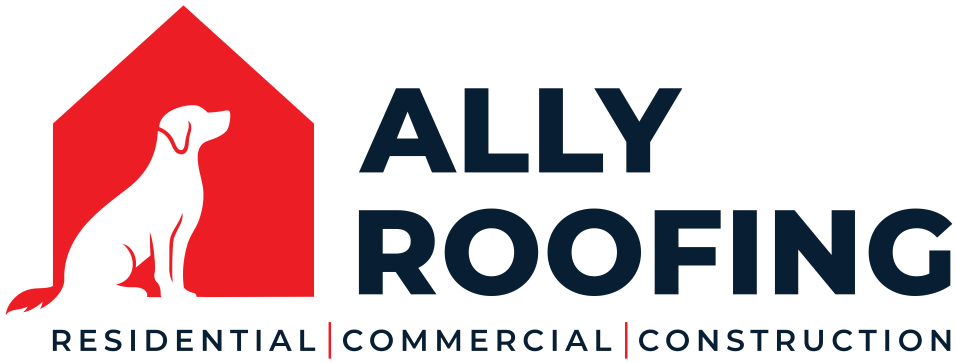Homeowners face multiple challenges when confronted with roof leaks, especially after a storm. They often times lead to significant water damage to the home interior. Mold growth may appear as a result of a roof leak that is left to linger. The dangers of a leaky roof can present themselves unknowingly at a time that is least convenient.
Determining the source of a roof leak can present an even greater challenge. The location of the outside leak rarely matches the source of the interior leak, leading to frustration on the part of the homeowner.
Locating the Source of a Roof Leak
In order to repair a leaky roof, it is necessary to determine the cause of the leak. Inside your home is the best starting place for locating the source of a roof leak.
- Make sure that the water on the inside is a result of a roof leak and not another problem;
- Once you’ve determined the source of the interior roof leak, then you’ll need to measure the location between two fixed points;
- Head into the attic and locate the source of the roof leak on the underside of the roof deck using the fixed measurements;
- Expand your search area and locate the actual entry point of the leak. Again, measure two fixed points where the water enters the attic;
- Note that any opening in the roof system is an area where water can enter the home. If any openings are revealed, then this may be where the water is entering from resulting in the roof leak.
The Dangers of a Leaky Roof
A roof leak is not something to put on the backburner. Aside from the damage to the framing of your home, it can also compromise insulation, promote mold growth, and even pose a potential fire hazard. This, on top of the potential for personal injury to self or other household members. Here a few dangers of a leaky roof you should consider.
Structural Deterioration
Ceiling beams, rafters, exterior trim, fascia boards, and wall framing can all suffer damages from a roof leak. The initial dangers of a leaky roof are damage to the attic and the items stored there. In the case of a large leak, it will damage the interior ceiling leading to paint and plaster damages.
During a roof leak, water may run along the underside of the roof decking and continue down along the framing. Damp wood develops rot and loses strength over time. This leads to roof sagging, bowing walls, and potentially a waterlogged foundation.
Damage to Insulation
When water interacts with insulation, the insulation clumps and loses its effectiveness. This allows warm air to escape through the attic possible running up your energy bill. Saturated insulation can also be a breeding ground for mold growth. The mold can then spread throughout your home’s structure, HVAC system, and vents.
Fire & Shock Hazards
When water comes in contact with electrical wiring it can create an open circuit leading to fire. Water seeping around open wiring can become electrically-charged which can result in a shock hazard. If this occurs, you will need to shut off all power to any of the circuits running through the affected area and call an electrician.
Setting up routine inspections of your roof, especially following a storm, is recommended. High winds and heavy rains can devastate your roof causing mass amounts of damages you may not notice at first glance. Don’t allow a leaky roof to settle and create more problems further down the road. Act now and call your local storm and water damage restoration team to setup an inspection right away.
It always pays to be well prepared for whatever the future brings. This is also why you should have a restoration company you know and trust. Mission Restorations has experts in fire, water, and mold restoration. If ever in need of services, don’t hesitate to call the best damage restoration team in Charlotte and its surrounding areas at 704-727-2000.




You can save money by having a higher deductible on your policy. Typically, insurance companies will start giving discounts at a $500 deductible and increase the discount as your deductible increases. Most companies offer deductibles up to $10,000. Be careful, however, because many mortgage companies will not allow you to exceed a $1,000 deductible, so check with your lender before opting for a higher deductible.
Mold growth may appear as a result of a roof leak that is left to linger.Determining the source of a roof leak can present an even greater challenge. Locating the Source of a Roof Leak In order to repair a leaky roof, it is necessary to determine the cause of the leak.
Inside your home is the best starting place for locating the source of a roof leak and get.
There are many different household problems that can be procrastinated. However, a roof leak repair should take the highest priority on your list of home maintenance issues. Leaks are a serious problem that can develop into numerous other issues when neglected. If you have a roof leak, call a professional roofer to repair it as soon as possible to avoid further damage and to help protect your home from bigger problems.
This article covered a lot of good information and helpful tips about roof leaks and the dangers to watch out for. Performing regular maintenance on your roof will help keep your home watertight. Be on the lookout for roofing leaks before they ruin your home and endanger your safety. Thank you for sharing this and best regards.